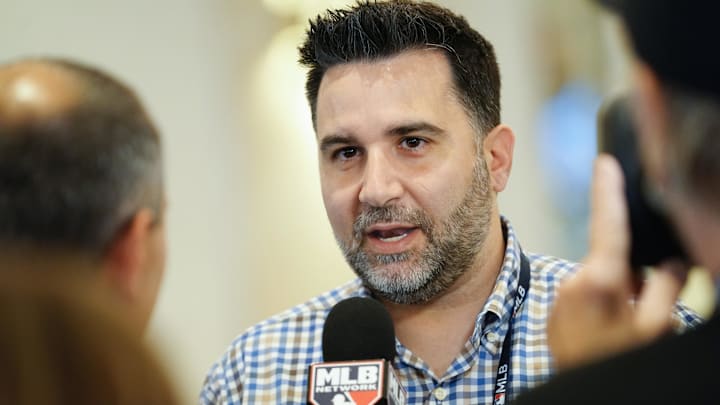Much has been made of the Atlanta Braves payroll of late. While the Braves have done very well to sign their young core to long-term extensions that have ranged from "extremely team friendly" to "reasonable" which will give them cost certainty and savings in the long-term, they have still seen their luxury tax payroll jump up in 2023 because of how that is calculated (it is based on the average value of contracts which, given the Braves' aforementioned extensions, works against them a bit when it comes to the luxury tax in 2023.
We have heard general manager Alex Anthopoulos talk about the Braves' payroll this offseason and it was certainly a bit of a mixed bag. While reiterating that the Braves are going to have money to spend and that payroll keeps going up, Anthopoulos acknowledged that there are going to be limits to that and we saw that when the Braves let Dansby walk to the Cubs this offseason.
To gain a more concrete understanding of where the Braves' payroll stands going in 2023 (assuming no additions during spring training which is very possible, if not likely), here is where they stand according to Fangraphs (there are discrepancies with these numbers vs. others like Cots, Spotrac, etc. but this seems like a good starting point for discussion as the payroll numbers are reasonably close).
2023 Non-luxury tax Payroll: $199,157,500
2023 Luxury Tax Payroll: $240,115,834
With the luxury tax threshhold set at $233 million, it is clear that the Braves are going to be among the top spenders in the league this season. Sure, the Braves are not Cohen and Mets, but I doubt many people thought that the Braves were ever going to pay the luxury tax and yet here we are. Things get rosier if the Braves can find someone willing to take on some of Marcell Ozuna's contract (who is owed $18 million the next two seasons), but that seems like wishful thinking right now.
What does this mean for the Braves and 2023 trade deadline?
One thing we know about Alex Anthopoulos is that he loves to to save some of his available cash for trade deadline moves. He has already said this offseason is that the thing the front office focuses on is how much cash they have to spend vs. their luxury tax figure (which is good news), so presumably he still has some money to spend if need be.
However, at some point the Braves are going to be capped out for 2023 even if AA won't admit it. While all overages when it comes to the luxury tax threshold are just a tax up to $40 million over, once you go over by more than $40 million, you start getting your draft picks messed up. I will go ahead and say it is extremely unlikely the Braves will find a deal they want to make so bad this season that they would be willing to move their highest draft pick back 10 spots especially given the state of the farm system. That pick (and the bonus pool money that comes with it) has a ton of value.
What about 2024 and beyond?
After the 2023 season, however, the benefits of all of these long-term extensions start to come into focus. While club options for guys like Charlie Morton ($20 million), Eddie Rosario ($9 million), Travis d'Arnaud ($8 million), and Collin McHugh ($6 million) plus the last year of Max Fried's arbitration cloud the picture a bit, the Braves only have $120,250,000 committed in real dollars for 2024 with a luxury tax figure of $148,333,334. Obviously those numbers will both go up after arbitration estimates get added in and the Braves exercise some options, but it sure seems like there will be some room to breathe on the payroll especially if the Braves don't pick up Morton's option.
More importantly, the luxury tax threshold is set to go up every single year. While this year is set at $233 million, next year they go up to $237 million with more increases each year after that. What the Braves do with that money remains to be seen, but starting to lock up some pieces of the rotation seems like a fair bet to make.
